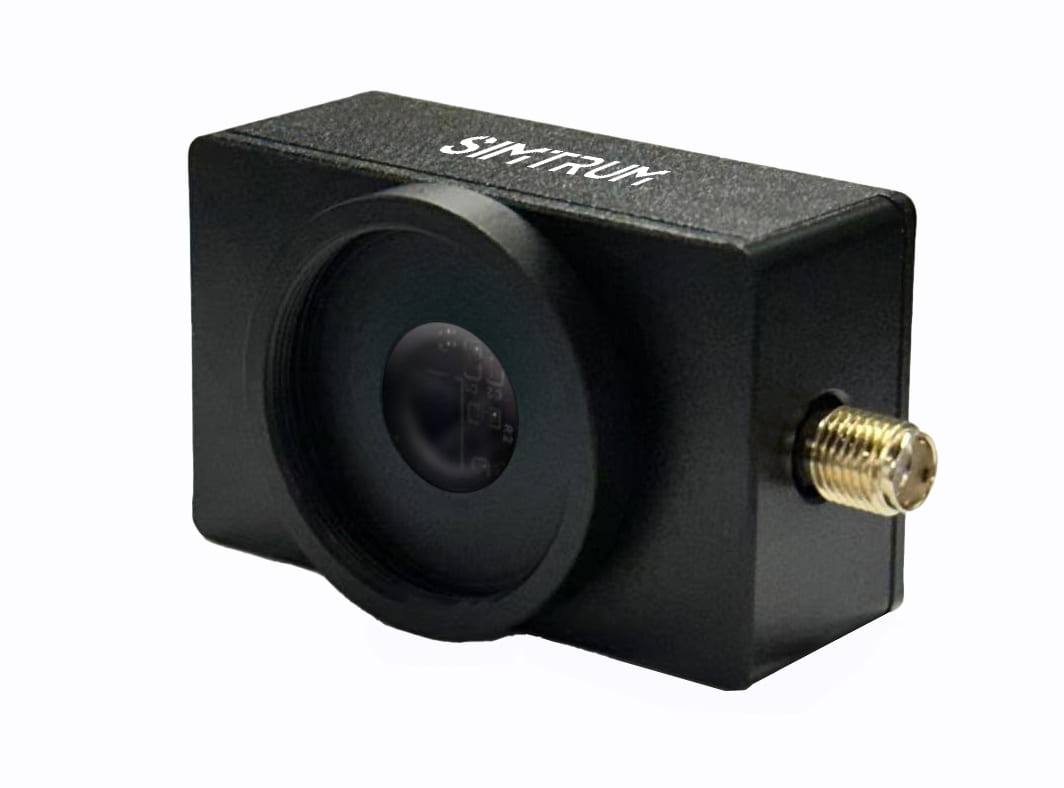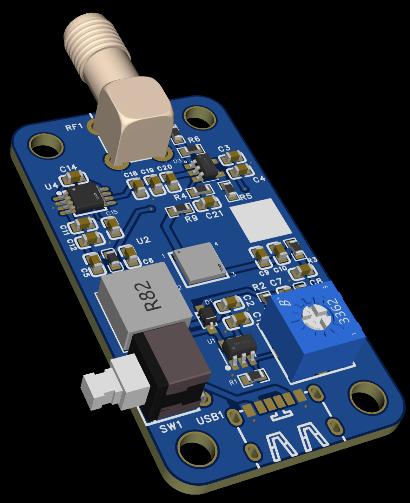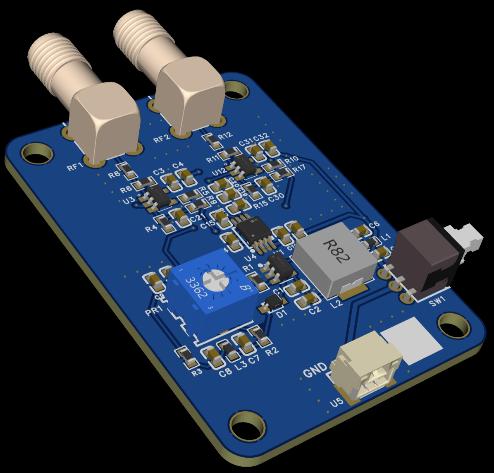|
|
 |
SIM_SiPM_01A
Spectral range:300-950nm;peak wavelength:420nm;dark voltage:2mV;active area:1*1mm;microcell size:10μm; PDE:18%;No. of microcells:2880;Gain:2*10^5
|
|
16-18 weeks |
$519.00 |
|
|
|
 |
SIM_SiPM_01B
Spectral range:300-950nm;peak wavelength:420nm;dark voltage:2mV;active area:1*1mm;microcell size:20μm; PDE:31%;No. of microcells:1296;Gain:1*10^6
|
|
16-18 weeks |
$519.00 |
|
|
|
 |
SIM_SiPM_01C*
Spectral range:300-950nm;peak wavelength:420nm;dark voltage:2mV;active area:1*1mm;microcell size:35μm; PDE:41%;No. of microcells:504;Gain:3*10^6
|
|
4-6 weeks |
$519.00 |
|
|
|
 |
SIM_SiPM_03B*
Spectral range:300-950nm;peak wavelength:420nm;dark voltage:2mV;active area:3*3mm;microcell size:20μm; PDE:31%;No. of microcells:10998;Gain:1*10^6
|
|
4-6 weeks |
$543.00 |
|
|
|
 |
SIM_SiPM_03C*
Spectral range:300-950nm;peak wavelength:420nm;dark voltage:2mV;active area:3*3mm;microcell size:35μm; PDE:41%;No. of microcells:4774;Gain:3*10^6
|
|
4-6 weeks |
$543.00 |
|
|
|
 |
SIM_SiPM_03C Super*
Spectral range:300-950nm;peak wavelength:420nm;dark voltage:2mV;active area:3*3mm;microcell size:35μm; PDE:50%;No. of microcells:5676;Gain:6.3*10^6
|
|
4-6 weeks |
$623.00 |
|
|
|
 |
SIM_SiPM_03D
Spectral range:300-950nm;peak wavelength:420nm;dark voltage:2mV;active area:3*3mm;microcell size:50μm; PDE:47%;No. of microcells:2668;Gain:6*10^6
|
|
16-18 weeks |
$543.00 |
|
|
|
 |
SIM_SiPM_06C*
Spectral range:300-950nm;peak wavelength:420nm;dark voltage:2mV;active area:6*6mm;microcell size:35μm; PDE:41%;No. of microcells:18980;Gain:3*10^6
|
|
16-18 weeks |
$567.00 |
|
|
|
 |
SIM_SiPM_01A_OEM
Spectral range:300-950nm;peak wavelength:420nm;dark voltage:2mV;active area:1*1mm;microcell size:10μm; PDE:18%;No. of microcells:2880;Gain:2*10^5
|
|
Contact us |
Request for quote |
|
|
|
 |
SIM_SiPM_01B_OEM
Spectral range:300-950nm;peak wavelength:420nm;dark voltage:2mV;active area:1*1mm;microcell size:20μm; PDE:31%;No. of microcells:1296;Gain:1*10^6
|
|
Contact us |
Request for quote |
|
|
|
 |
SIM_SiPM_01C*_OEM
Spectral range:300-950nm;peak wavelength:420nm;dark voltage:2mV;active area:1*1mm;microcell size:35μm; PDE:41%;No. of microcells:504;Gain:3*10^6
|
|
Contact us |
Request for quote |
|
|
|
 |
SIM_SiPM_03B*_OEM
Spectral range:300-950nm;peak wavelength:420nm;dark voltage:2mV;active area:3*3mm;microcell size:20μm; PDE:31%;No. of microcells:10998;Gain:1*10^6
|
|
Contact us |
Request for quote |
|
|
|
 |
SIM_SiPM_03C*_OEM
Spectral range:300-950nm;peak wavelength:420nm;dark voltage:2mV;active area:3*3mm;microcell size:35μm; PDE:41%;No. of microcells:4774;Gain:3*10^6
|
|
Contact us |
Request for quote |
|
|
|
 |
SIM_SiPM_03C Super*_OEM
Spectral range:300-950nm;peak wavelength:420nm;dark voltage:2mV;active area:3*3mm;microcell size:35μm; PDE:50%;No. of microcells:5676;Gain:6.3*10^6
|
|
Contact us |
Request for quote |
|
|
|
 |
SIM_SiPM_03D_OEM
Spectral range:300-950nm;peak wavelength:420nm;dark voltage:2mV;active area:3*3mm;microcell size:50μm; PDE:47%;No. of microcells:2668;Gain:6*10^6
|
|
Contact us |
Request for quote |
|
|
|
 |
SIM_SiPM_06C*_OEM
Spectral range:300-950nm;peak wavelength:420nm;dark voltage:2mV;active area:6*6mm;microcell size:35μm; PDE:41%;No. of microcells:18980;Gain:3*10^6
|
|
Contact us |
Request for quote |
|
|
|
 |
SIM_SiPM_03B*_DC_OEM
Spectral range:300-950nm;peak wavelength:420nm;dark voltage:2mV;active area:3*3mm;microcell size:20μm; PDE:31%;No. of microcells:10998;Gain:1*10^6
|
|
Contact us |
Request for quote |
|
|
|
 |
SIM_SiPM_03C*_DC_OEM
Spectral range:300-950nm;peak wavelength:420nm;dark voltage:2mV;active area:3*3mm;microcell size:35μm; PDE:41%;No. of microcells:4774;Gain:3*10^6
|
|
Contact us |
Request for quote |
|
|
|
 |
SIM_SiPM_03C Super*_DC_OEM
Spectral range:300-950nm;peak wavelength:420nm;dark voltage:2mV;active area:3*3mm;microcell size:35μm; PDE:50%;No. of microcells:5676;Gain:6.3*10^6
|
|
Contact us |
Request for quote |
|
|
|
 |
SIM_SiPM_06C*_DC_OEM
Spectral range:300-950nm;peak wavelength:420nm;dark voltage:2mV;active area:6*6mm;microcell size:35μm; PDE:41%;No. of microcells:18980;Gain:3*10^6
|
|
Contact us |
Request for quote |
|
|
|
 |
SIM_SiPM_06C Super*_DC_OEM
Spectral range:300-950nm;peak wavelength:420nm;dark voltage:2mV;active area:6*6mm;microcell size:35μm; PDE:50%;No. of microcells:22292;Gain:6.3*10^6
|
|
Contact us |
Request for quote |
|